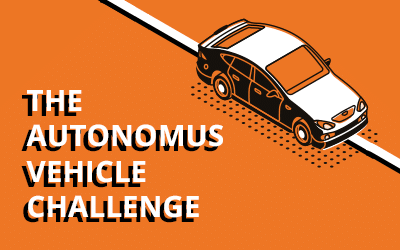As autonomous vehicles approach advanced levels of intelligence, reliability, and popularity, the adequacy of existing infrastructures to support this self-driving model will be called into question.
The imminent arrival of self-driving cars has been a buzz-worthy topic for years as the technology has moved from futuristic aspiration to a tangible reality.
However, when the first fatal autonomous vehicle crash occurred in 2018, the industry’s rapid rate of progress stalled. The public safety concerns that subsequently arose pushed development and testing into the shadows, where major players like Tesla, Ford, and Waymo have continued to make quiet progress. And since, any industry developments hitting news outlets tend to center around strides in safety and predictability.
In terms of technology, Ford believes it will reach the technological sophistication to roll out autonomous vehicles commercially by 2021. However, CEO Jim Hackett conceded in April of this year that they had initially “overestimated the arrival of autonomous vehicles.”
Despite these hesitations and even minor retreats in progress, innovation in autonomous vehicles is thriving. The level of technological advancement for any given autonomous feature is typically dictated by the Society of Automotive Engineers’ (SAE) widely-accepted Levels of Driving Automation.
In recent models of consumer vehicles, level 2 features like adaptive cruise control, lane-keep support, and parking assistance have become commonplace. Tesla is arguably leading the pack in consumer markets, however, as they currently boast vehicles with traffic jam automation, which is a level 3 capability. As of July 2019, Daimler and Bosch have received the first approval to roll out an SAE level 4 parking automation for everyday use.
As we inch towards the final stages of automation, there will be fundamental changes to the way we get around—especially in cities. Are we, as a society, equipped with the infrastructure to support these innovations? And have we experienced the inevitable paradigm shift that will be required for a seamless integration process?
When we start asking these questions, it is easy to focus on the distant future: the days when level 5 autonomous cars will be able to drop off and pick up passengers without having to park at the passenger’s final destination. When this occurs, personal vehicles will likely then proceed to nearby parking areas where they can pay a lower fee and await the passengers next ride.
But even before this vision becomes a reality, the expectations of drivers who are accustomed to automated features are rising. Therefore, the demands of ancillary services like parking are growing and changing. As increasingly automated vehicles assimilate into the market, capabilities like console integrations, automatic access, and parking assistance will demand complimentary services in parking interactions.
In order to meet these user expectations and maintain relevance, traditional parking assets and valet operations will have to introduce automated features like Bluetooth access, dynamic digital rate signage, mobile payments, and text vehicle retrieval that compliment the automated driving experience and contribute to a seamless, intuitive user experience.
Furthermore, when fully autonomous vehicles finally arrive in consumer markets, the garages and valet services that began to meet automated needs today will be primed to offer services that meet the needs of more advanced autonomous technologies down the road.
Byline: Miranda Waldron Curry, Product Marketing Specialist, Miranda.WaldronCurry@flashparking.com
FlashParking is a leader in parking and mobility solutions that address some of the most complex transportation problems facing urban societies. Founded in 2011 with a simple mission to perfect the parking experience at valet and parking access and revenue control (PARCS) operations, FlashParking has grown to serve thousands of site-level operations, enterprise portfolios, and smart cities nationwide. By establishing future-ready infrastructures, delivering unrivaled cloud intelligence, and designing world-class customer experiences, FlashParking is powering the evolution from traditional parking assets to next-generation mobility hubs.
For more information on the FlashMobilityHub—a future-ready solution for cities, owners, and operators to evolve into the new mobility ecosystem—visit www.flashparking.com/mobility/

